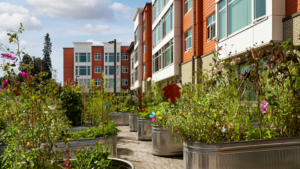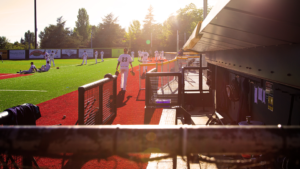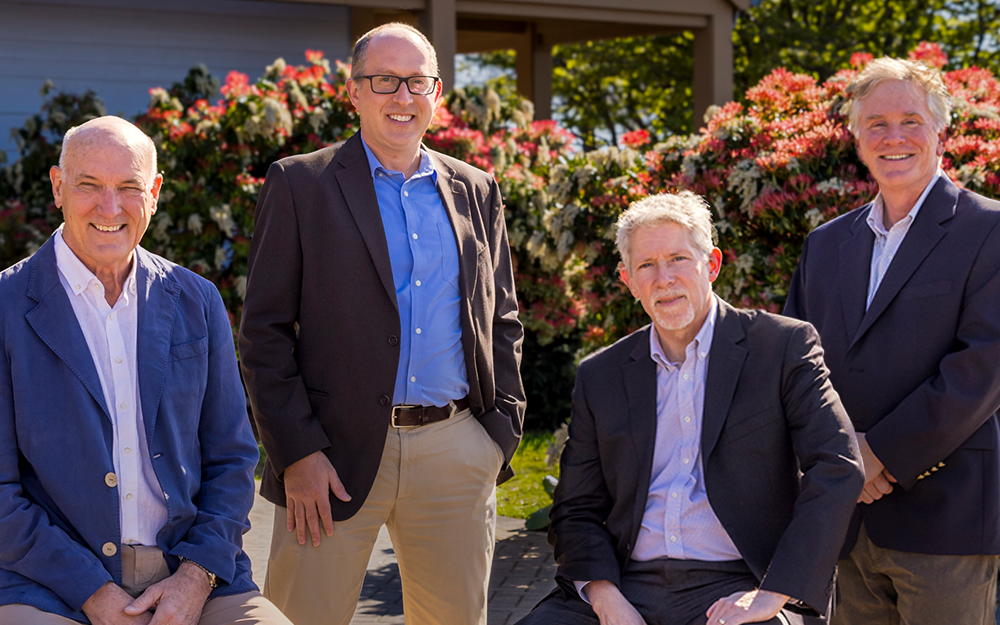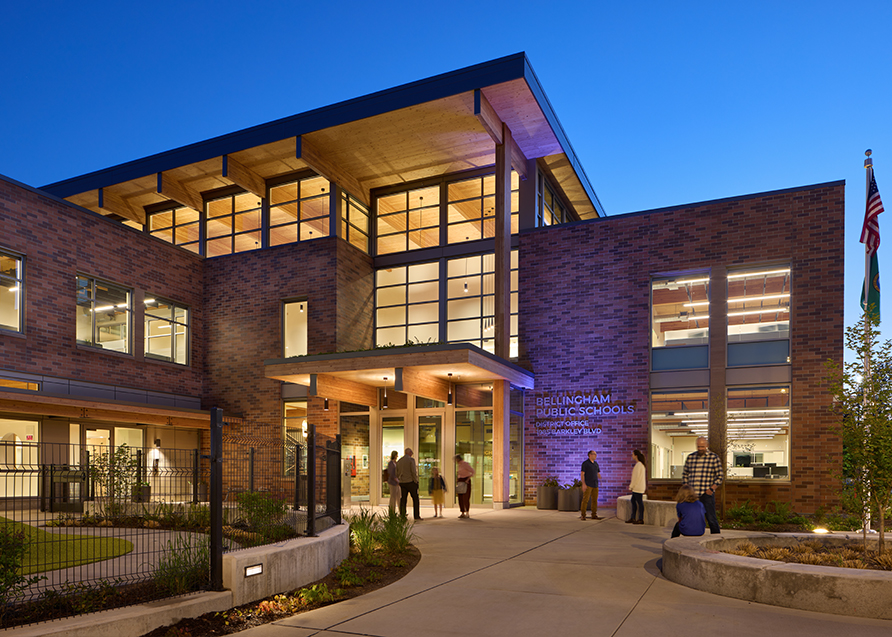What makes a great outdoor space depends, of course, on its purpose and context. Most broadly, an outdoor space at home often emphasizes privacy, whereas public outdoor spaces focus on fostering interaction, often with smaller retreat areas. Western Washington University’s Red Square is an example of a public outdoor space that serves as a “mixer” — a very active space with people moving in and out with places to stop and interact, while the Haskell Plaza located near the Environmental Science building is subdivided into pedestrian “streams” punctuated with smaller, more private spaces. Traffic here tends to flow north-south, unlike Red Square, where people pour in and out from all directions. These public spaces on the same campus function very differently. Still, at the heart of every great urban outdoor space: people. These are the ways to attract them:
- Make it usable in multiple seasons — especially in the Northwest!
- Offer a range of sun and shade, cover/enclosure and open areas.
- Plan a combination of hard- and soft-scapes (e.g. pavement and gravel, grass and pavers, etc.)
- Provide for multiple uses, such as entertaining, cooking, lounging, gardening, socializing.
- Give people places to congregate (seating/standing tables/bars/fireplaces/etc.) as well as areas to “opt out.”
- Connect with surroundings while maintaining separation from street /public space. This can be a tricky balance, but people are more likely to use spaces that maintain this “both/neither” transition zone.
- Take advantage of natural beauty, light and views; incorporate elements of nature.
- Pay attention to how traffic flows to, from and within the area.
- Celebrate unique qualities of the space so it is recognizable as a specific place.
- Allow for wide range of users including a variety of ages and abilities.




